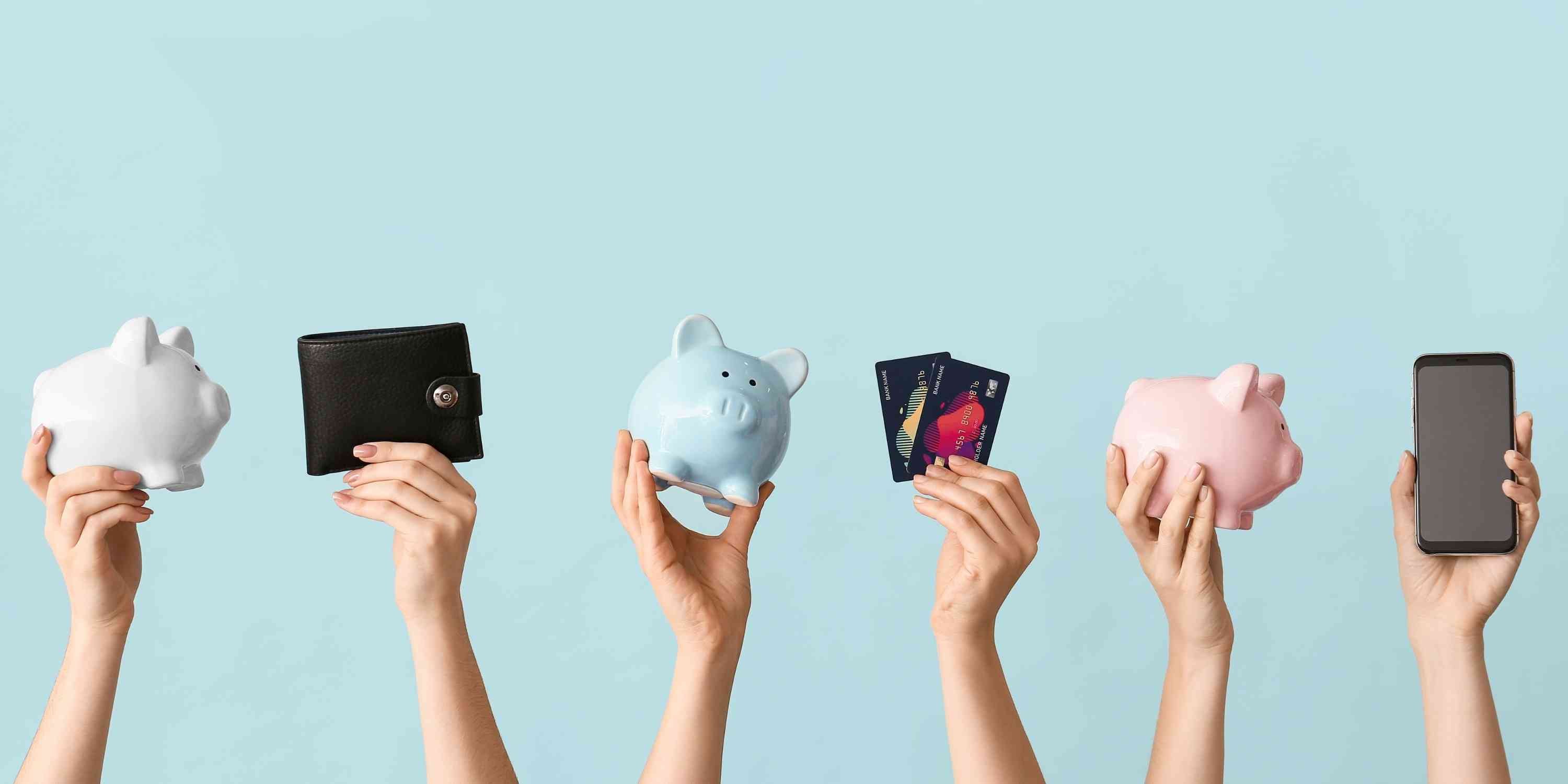Episode 77
Mona Ibrahim from the National Bank of Egypt discusses customer feedback and how to master it for banking in a digital age. She provides insight into best practices, CX metrics, and employee complaint management.
Episode 77
Episode Summary
Importance of feedback
In today's age of big data, customer feedback can be the guiding light for a company in knowing where they stand and whether there's room for the enhancement of services. After all, it's the voice of the customer that can drive true, meaningful change in an organization. Customers who give feedback also become more connected and involved in shaping your business, which increases loyalty and satisfaction long-term.
Employee complaints
Feedback that directly relates to employees can be difficult for managers to deal with. But the best solution to this problem is transparent communication. It's important to also place focus on the positive feedback employees receive, and reward them to show that their work is appreciated. As a result, employees who feel valued can absorb constructive criticism more effectively and therefore the negative feedback can be used to build them up.
Best CX metrics
When discussing how a company can differentiate engagement strategies for various categories of consumers, Mona also explored the customer experience metrics she holds in highest regard. The combined use of these creates a holistic view of your customers' loyalty:
- NPS - net promoter score measures customer loyalty based on recommendations made to friends and family, scaled from 1 to 10.
- CES - customer effortless score measures the ease with which a customer can acquire a new product or service they desire. It can also help to analyze difficulties found within a service journey, and therefore improve them.
- Churn rate is a calculation method that reflects the quantity of lost business from valued customers, and the reasons behind their reasons for discontinuing custom.
- CSAT - customer satisfaction scores are a general metric any business can implement through customer surveys that measure levels of satisfaction, and service efficiency.
This article summarises podcast episode 77 "Driving Culture Change in Banking Through VoC" recorded by CX Insider. For more information, listen to the episode, or contact Mona on her LinkedIn profile.
Written by Marcell Debreceni
Full Episode Transcript
Mona: Above all this, if you want to implement anything new, you have to make sure 100% that it is secured, that the customer feels safe while using it. Some businesses focus on the digital transformation part - while this transformation part has been always about people.
Marcell: Hey everyone, welcome back to another episode of CX Insider. My name is Marcell and I'm the producer behind the show. From now on, I'll be taking over narration from Valentina, and you'll also see me in the host chair soon. Today we talk to Mona Ibrahim, who specializes in service quality and voice of customer for the National Bank of Egypt. And we cover crucial topics such as customer feedback, digital transformation and the best CX metrics. Enjoy the episode, and if you do, why not subscribe to our YouTube channel for access to the best content CX Insider has to offer? By the way, this podcast is brought to you by ACF Technologies. Global Leaders in Customer Experience Management Solutions.
Valentina: So Mona, would you like to introduce yourself and tell us who you are, what you do?
Mona: First of all, thank you so much, Alex and Valentina, for inviting me here to be a part of Customer Experience Insider. It's great to discuss customer voice and customer engagement with you through your channel. Thank you so much for this. Briefly, if I would introduce myself, my name is Mona Ibrahim, currently working in service quality and voice of the customer in the National Bank of Egypt. I came up with nine years of experience in the customer experience field, starting from Emirates, MPD and Emirates, National Bank of Dubai, LTE Bank. And finally, I'm in the First Bank in Egypt and I am responsible for applying all quality standards in the call centre, transforming voice of the customers' insight into action and committed everyday to change peoples' journey to exceed their expectations and to improve customer loyalty and experience.
Valentina: So that was like a perfect introduction.
Mona: Thank you so much.
Valentina: And so what kind of, what were your motivations? What got you into this field of customer experience? Have you always, I guess you never thought of actually working in customer experience or customer voice, or was this always your goal?
Mona: Yes, all the time. Quality all the time. Service quality all the time. Dealing with customers, complaints, customer engagement scorecards, call centre. All of this.
Valentina: Wow. Okay. That's like we have. You're probably the most motivated guest we've ever had on CX Insider.
Mona: Thank you. Thank you.
Valentina: Because whenever I ask this to anyone else, they were always like, oh, I never thought I would end up at this place.
Mona: No, I'm different. I love quality. I love quality, and I love serving customers. And I love to honestly, to make everything easy in our bank or in our company.
Marcell: One of the most common problems for companies is the collection of customer feedback, and afterwards the utilization of that feedback to deliver meaningful, positive change. What are some of the best practices companies can use to master the art of feedback?
Mona: Before saying the best practice in collecting customer feedback, we have to know the importance of collecting customer feedback. I think that customer feedback is the guiding light to your company. It makes us know where we stand nowadays in our market and if there is room for enhancement and improvement. Customers who are asked for their feedback are more profitable and likely less sharing than those who weren't. Also, in my opinion, the more you collect customer feedback, the more they are involved in shaping your business and this makes them feel more attached to your company and to your industry. I think that is now best practice in collecting customer feedback, but that is the best time to have a real accurate high percentage of response from your customers, which is immediately after having their service done, their product delivery, direct interaction with the branch or the ATM or after direct interaction with any other of our services. In general, we do put a survey form in each and every touchpoint with the customer. We follow the method of pushing and pulling surveying methods like a survey on the website, QR codes and tablets in the branches on each and every employee's desk. Automated IVR on the call centre. Sending SMS and email is definitely the important one. Outbound calls by our call centre.
Valentina: Okay, so you say that the best timing in collecting customer feedback is right after the customer...
Mona: And yes, you will have a high response from your clients and a real one.
Valentina: Mm hmm. Mm hmm.
Marcell: In other words, it's like making a smoothie. The freshest fruits a.k.a. Feedback bring the sweetest juices, but categorizing customers based on their feedback is also important. How could a business go about doing this effectively?
Mona: When we categorize complaints or segment a complaint, it's depending on its nature and its source channel. We definitely look on all customer complaints and do our best to solve them all in much less time. But complaints that may affect our financial loss or reputation, we may give them more attention and priority than others. Also, customer service complaint, attitude or attitude. Complaint is one of the crucial complaints that we give attention to it too, because if you serve the customer better, this will return back in your investment. So and if we talk about the most crucial channels among all, so we'll never neglect nowadays the importance of social media. If you are talking specifically in Egypt due to its high reputation, I think that social media is not a negativity channel, but it's a magnifying glass of it. Anyone can log on the Internet, post the complaint, write whatever he wants to say from his own perspective, and this may affect other customers loyalty. Here in Egypt, we have 77.66 million social internet users. Only 51.45 million are the activated ones who present 49% of the total Egyptian population who spend on average 3 hours and 6 minutes on a daily basis. There is a lot of sites that customers can apply and post his complaint on like Twitter, Instagram and Facebook. But worth to say that Facebook is the first highest traffic visited site by our population, Egyptian population by 80.6% compared to others. Also, there was an increase, a huge increase in social media users between year 2020 and 2021 by 16.7%.
Valentina: I guess most people shared their negative experiences than their positive experiences, right, And especially in social media. Twitter is the is the platform where people go when they are annoyed, upset, angry with certain brands, and they just give their raw opinion, whatever they think.
Mona: Match is the difference. Facebook is the first social site after YouTube. It's social. Yes, YouTube comes first and then Facebook.
Valentina: So YouTube, YouTube comments, they are. Do you mean to publish videos?
Mona: No. Videos.
Valentina: Yeah.
Mona: But if we will take the social media site, then it will come. Facebook, the first one compared to Instagram and Twitter in Egypt.
Valentina: Mm hmm. Mm hmm. So when you when it comes to, like, categorising and analyzing the feedback on your social media, do you also analyze, for example, I mean, of course you review your comment section on your like social media accounts, your company social media accounts.
Mona: But there is a team dedicated for social media. Yeah.
Valentina: Yeah. So you also analyze like whoever tags you, mentions you, hashtags you.
Mona: Yes. Yeah. All, all of us. All of this hashtag tags every if our name comes on social media, we have to see it. Mm hmm. Mm hmm.
Valentina: Yeah.
Marcell: Specific customer complaints can often be bound to single instances with individual employees. How can a firm deal with these issues regarding employees directly.
Mona: When it comes to collecting customer feedback? We have always to have one aim from collecting this, which is service improvement and reaching the ultimate customer satisfaction, converting voice of the customer into immeasurable skills critical to quality. I think it's the first key step in improvement method and when it comes to your employee. So we have to follow the transparency communication method. It's important to have on a monthly basis and awareness day and I can say an awareness day, a meeting or even a conference with our employee, sharing with them all the collected customer feedback, whether it's positive or negative or neutral. And if we will look at the bright side of the feedback, the positive one. So we make all kinds of appreciation and recognition to enhance the service level and also to encourage our employee these kinds of appreciation like trophies on their desks. Certificate. Appreciation. Certificate. Tangible Gifts. Internal Communication. Internal Circular Mail to all user. All kinds of appreciation that lift them up. We as a customer experience also benefit from this day when we have an open discussion with the employees we know. Get to know more about the obstacles and the difficulties that they face during serving the customer, and this helps us to work on it to help them having a healthy work environment for them. Also, we as a customer experience, after this gathering or this discussion, we remeasure and re monitor again. All clients collected feedback to figure out we can figure out the progress and find out the repetitive issue and to reach its root cause. All these repetitive issues should be shared with all stakeholders in a focused meeting group to reach the best practice and, according to it, agree on the Action Plan and implementation before delivering any negative feedback.
Mona: Managers must build a trustful relation with their employees. This will help them. In receiving the negative feedback, as we can say from a trusted person who is keen to support and help them to improve rather than pointing out their faults and mistake. If you are not connected with your people in your organisation, then you will never deliver the experience you want to your customers. And I think that feedback is the best tool for managers, but it's effective when it's delivered in a proper way. My advice to the managers when it comes to delivering negative feedback, managers must sit face to face meeting, sitting privately, not in a group, delivering the negative feedback in a very respectful and caring way, not to talk in a rude way. And also, please managers do not prejudge your employee without giving them the opportunity to listen to their voices and their justification behind this behaviour or this issue. Because if the employee felt that you listened to their voices, like we listened to the customer voice, then you're sending them out messages that you say their opinion and their presence matter to us and its value. They together have to identify the problem, set a developing plan to avoid this issue, to reoccur, and also to prevent it from to be counted in their service level KPI. In their monthly scorecard, managers must have a regular follow up with their employees concerning the implemented plan and the steps taken and its outcome. Not to say the issue and leave. I think that if it is done by this way, employee can be even more grateful.
Marcell: Covid 19 has affected us all in drastic ways. Over the past couple of years. Digital transformation exploded and face to face became a thing of the past. However, now that regulations have eased and consumers are returning to physical interaction, how has the banking industry in Egypt been affected? Are people re-engaging with face to face services or are digital channels now king?
Mona: Covid 19 has turned most companies goals upside down, and even they have changed their strategy to survive the tide. Even the behaviour of the customer has changed to cope with the circumstances. And yes, now I have seen a huge return to face to face customer dealing with our employees in the branches to handle their their needs. But if we can make a comparison between the pandemic year and the year after in Egypt, specifically in terms of number of online transaction. So we will find that according to Egypt Digital report, in year 2019, there was 45 billion online transactions with total amount $4.34 billion versus the year after. After the pandemic is somehow settled and being controlled somehow. There was 41 million of online transaction pressures with total amount $3.28 billion. I know that there is no huge difference between both figures 45,000,000,041, but worth to say that there was an increase in the internet users by 8%. Yes, I can see now people are going back to their daily routine, their daily basis, interacting with our employees. However, this our effort and investment in the digital platform will always take place and exist because you have to give customers both ways. Whether he wants to deal with us in a digital platform or direct interaction, and also to avoid any future pandemic crisis or lockdown.
Alex: Yeah, I think that's a very good point. And from the figures that we see coming out of European reports that they do, customers want to have all options when it comes. So it doesn't matter whether it's pandemic or not. Customers now want to have all options there and decide when and where to interact with their bank. So overall, how important do you think is are digital channels when it comes to customer engagement at the moment in Egypt?
Mona: Digitalization is very important in Egypt nowadays. Most companies. Covid 19 has encouraged most companies to go and implement digital channels in their services as soon as possible. Here in Egypt, we have 96% of the Egyptian total population have smartphones. This makes it for us easy to increase customer engagement through digital channels. But also we have to keep an eye on customers behaviour and culture that should be embedded in the digital transformation part. In my own perspective, this strategy, this transformation strategy should have three main aims. First, service hassle free human intervention at a certain point and security wise. We have implemented a lot of services in our digital channels to save customers effort, time and being hassle, like transferring money from bank to bank, instant online payment, paying the bills, opening accounts, a lot of other services for the second aim. I can say that age record in Egypt makes the factor of human intervention is a must. Proving this, if we can look at the usage of online purchases according to the age, so you will find that age between 54 and above the user by 49%, while the youth and the age between 24 and 53 the use by 60%. You have to give customer both ways, whether he wants to act directly or through digital channels, as I mentioned. Because if it doesn't go by this way, we may face an increase in number of complaints and decreasing customer engagement with also to mention that there was an Egypt startup that implement shared bots instead of call center, and they didn't recognize their limitation. And according to this, they lost a lot of customers and failed in customer engagement. Above all this, if you want to implement anything new, you have to make sure 100% that it is secured, that the customer feels safe while using it. Some business focus on the digital transformation part. While this transformation part has been always about people.
Alex: So I think the important point from this is that you shouldn't kill off the channels that you are trying to get away from immediately before you really test the effect of the new channels. I think that is a very important point to be made.
Marcell: According to a report from Microsoft, 97% of global consumers say that customer service plays a key role in their loyalty to a brand. It can also be 6 to 7 times more expensive for a company to attract a new customer than to retain an existing one. With this in mind, how does Mona differentiate engagement strategies between new and existing customers?
Mona: Building loyalty and happiness for existing clients is much easier for us than the new one. But let us confirm first that customer engagement strategy for both new and existing clients is somehow more or less equal to each other. But if we talk separately about customer engagement strategy for the existing clients, so I can say that we have built solid engagement after years and years after collecting a numbers of collected feedback from our customers, knowing what they like and what they dislike and their needs and their behavior also. And we have implemented this in our real life, in our business, like facilitating the service, customizing products for them, expanding numbers of branches and ATMs, a lot of other implemented plans to get more customer engagement with them. And I can say that that's the bond with the customer and to make a solid relation with them that they will be the best advertising agency for us in their community. They will get a lot of new customers to our sites, as we can call it, referrals. In my opinion, this coming customers, this new customers are half loyal to us, knowing our reputation, knowing how we care about the customer and how we care and listen to their voices.
Mona: And this will be very easy for us to get them on board for the customer engagement strategy for the new clients. We implement onboarding strategy for them. Like a welcome call from one of our representatives. A sending SMS to sending SMS of features of our services. A lot of surveys to get to know about the behaviour and the mindset of the customer and his future needs. All this. All this to maintain and win customer engagement. And I don't know why. Nowadays some service providers. Focus on sales and product marketing and they neglect from their strategy see X role. They focus as much as they can. They want to get a new customers and customer base. They do not take care of their existing clients. And finally, these clients, these existing clients leave them going to other companies that take care of them and listen to their voices. What I want to say that if you want a solid customer engagement successful one, you have to take care of your customers.
Alex: Yeah, that's a good point. And I see that in companies here as well. They sacrifice the engagement with the existing customer because they take them for granted and then when you sell them. I think that's a good point. Yeah. When it comes to measuring customer experience, which metrics do you think are the most important and how do you implement them? How do you use them nowadays?
Mona: Yes, there is a lot of customer experience metrics currently used to figure out where customer experience stands, and I can say that there is for customer experience metrics important, which is NPS, C. S churn rate, and C said each one of them measure a separate purpose. Also, business must understand the Christianity of building a successful, successful customer experience management model By using these customer experience metrics. By combining all these together, you will have a holistic view. From this view you will know how many customers are loyal to your company, how many are dissatisfied, and the reason behind their dissatisfaction. Also, you will find and figure out how many customers are loyal and they change their mind. You will figure out also the gaps and the areas of improvement. For the first six metrics, NPS stands for Net Promoter Score its IT measures the loyalty of the customer to your company by your recommending your company to their friends and relatives. It's scale between 0 to 10 and nine and ten and indicates the. That loyal promoter customer. See as it stands for customer effortless cool. It may be related to new service or product that the customer has applied for. It measures how easy it takes from the customer to apply and get his service or product done. It also helps us to analyze the difficulties of the service journey offered to the customer. Churn rate retention rate. It's not like an NPS or SES. It's not a survey question, but it's a calculation method that reflects two main aspects. Number of lost business as a value customer. How many customers has stopped using your product or service? And the reason behind leaving us the last six metrics thisthat it stands for customer satisfaction, and it's the normal survey question that any business can implement. It measures customer satisfaction and service efficiency.
Valentina: From all these metrics that you mentioned, which one would you say is the most difficult or complicated to collect data?
Mona: Churn rate. Churn rate is.
Alex: I want to talk about churn rate as well, like the idea that we have when it comes to banking specifically that there is very low churn rates, usually people who decide to bank with one bank, they usually stay with that bank for a long time, or at least the whole lifetime or for a long time. Do you see a difference between the ages the same way you mentioned before in how much they churn? Like, for example, do younger people churn more easily than older generations?
Mona: We can facilitate. It's easy to facilitate products for youth than the other customers, if I can say and this leads us to have much loyalty from this age rather than the older one.
Alex: Excellent that you think that is because they give you more feedback is more easy to collect feedback from them.
Mona: Yes, yes, yes. And I think that also customer feedback. The increased number of feedback customers is from youth, not from the other age. Okay, When we send SMSes to this age, respond to us rather than the others.
Alex: Okay. Maybe. Maybe younger generations want to voice their opinions more than their narrations, I guess. Yeah.
Mona: They have a lot of channels to scream and to have our voices in the branch in the cold center, face to face, everything.
Marcell: We hope you enjoyed the episode. If you did, don't forget to subscribe to our YouTube channel. There will be posting full length videos, clips of chapters, and also shorts. If you want to join our community. Head over to LinkedIn and follow us at CX Insider Podcast. Enjoy rapid fire questions and I'll see you in two weeks. By the way, this podcast was brought to you by ACF Technologies. Global Leaders in Customer Experience Management Solutions.
Valentina: These are very random questions about your random things. So if you had one subject you would like to learn more about, what would it be?
Mona: In general?
Valentina: In general, any subject.
Mona: Body language.
Valentina: Hmm. Interesting. What is the best present you have ever received?
Mona: Uh. Food.
Valentina: What food? Do you have any favorite one?
Mona: Any food? I'm okay with every type of food.
Valentina: Okay. What is your proudest accomplishment so far?
Mona: I'm very good at cooking.
Valentina: Okay, cool. Those were all my questions. Thank you very much for your time.
Mona: Thank you so much, Valentina. Thank you so much. Alex and Marcell, thank you so much and nice to meet you. And I hope to see you soon if you come in Egypt, it's a pleasure to meet you face to face.
Alex: Yeah, of course. If you ever come and if you ever traveled to London, we would love to go out for a drink.
Mona: You do it. Yes, definitely. Just text me and I will be there.






